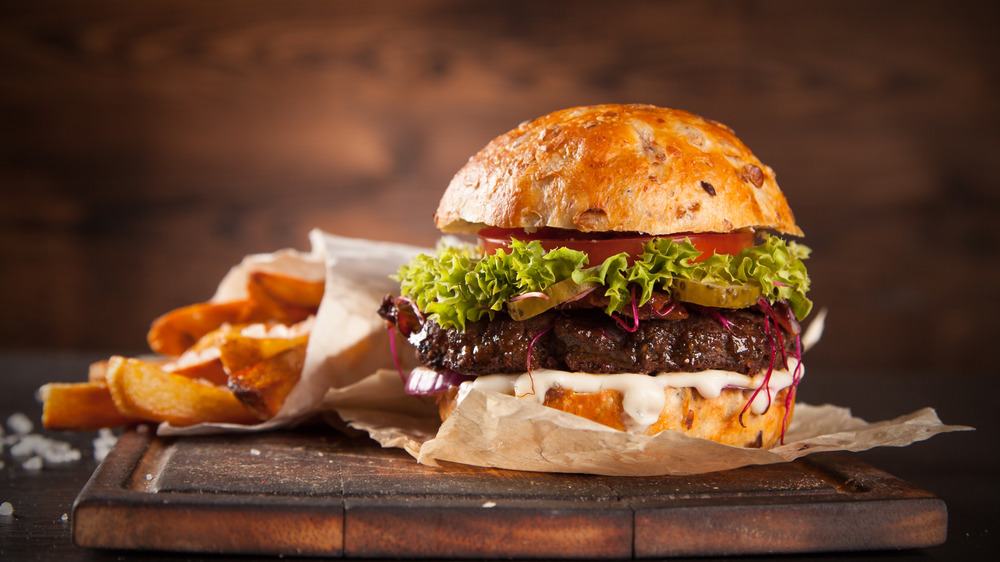The Real Reason Chili's Gave Up On Its Grass-Fed Burgers
Chili's Bar & Grill's swing to grass-fed burgers proved to be enthusiastic, but short-lived. In July of 2016, Brand Eating relayed Chili's announcement that they would debut grass-fed patties featured in two burgers, the Sunrise Burger and the Ultimate Bacon Burger – though you could replace any patty in a craft burger with a grass-fed alternative if you chose. They were so excited, in fact, that their new patties served as centerpieces in a televised ad campaign: "When we started Chili's, people called us the Hamburger Hippies. Maybe the name still fits."
Even in that October, after what Chili's parent company Brinker International described to Food Business News as "[the] toughest quarter casual dining has seen in five years," they appeared keen to promote their new grass-fed patties. The grass-fed burger represented the first time Chili's brought overt transparency to the table, Wyman Roberts, CEO and President of Chili's explained. "[We] were happy with our first marketing effort around that and we're going to continue to learn and get smarter about how to do that."
However, by September 2017, Chili's removed the grass-fed patties from their menu. To be fair, this was not so much a rebuke of the concept of grass-fed patties as much as an entire menu overhaul. CultureMap noted that Chili's reduced its menu by 40 percent, lopping nearly 50 dishes from the 125 offerings in favor of focusing on the brand's three basics: burgers, ribs, and fajitas. Business Insider, though, simply listed the patties as "unremarkable."
Fed up with grass-fed?
Given the reasons listed by CultureMap and Business Insider, it seems the reception of Chili's grass-fed patties was simply too lukewarm for them to continue spending money on it. The reason behind the reception may be hinted at by a discussion on Chowhound in which over a hundred posters commiserate over the, to use the OP's description, "icky" flavor of grass-fed beef, especially when compared to grain-fed. There were some dissenters, but a pro-grain beef majority emerged.
Of course, this is not a particularly scientific approach. We could turn to HuffPost, which also tested out the grass-fed vs grain-fed taste, and find that while people could appreciate the grain-fed versions, they raved over the grass-fed ones. That said, the author did find one person who disagreed: "Grass fed. Tastes weird. F*ck grass."
The difference in taste, as The American Criollo Beef Association comments on their comparison, is due to the fact that cows who eat grass, not grain, develop more muscle and less fat in their final months: "Many describe the taste as meatier and even more similar to game meat." However, if you are buying a burger from Chili's, you probably desire a juicy, fatty, unnatural burger that comes from a grain-fed cow. So, the grass-fed, leaner variety would disappoint. Perhaps, our palettes will change in the future. But that change occurring in an open market setting seems rather unlikely.

